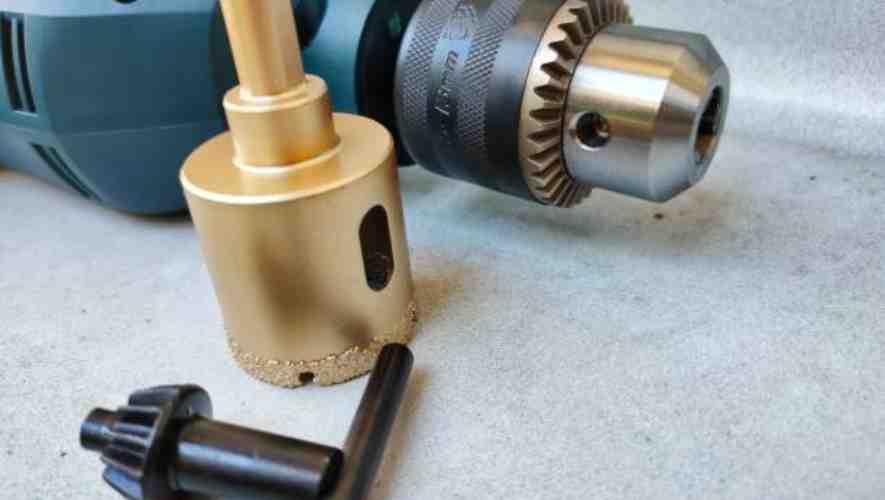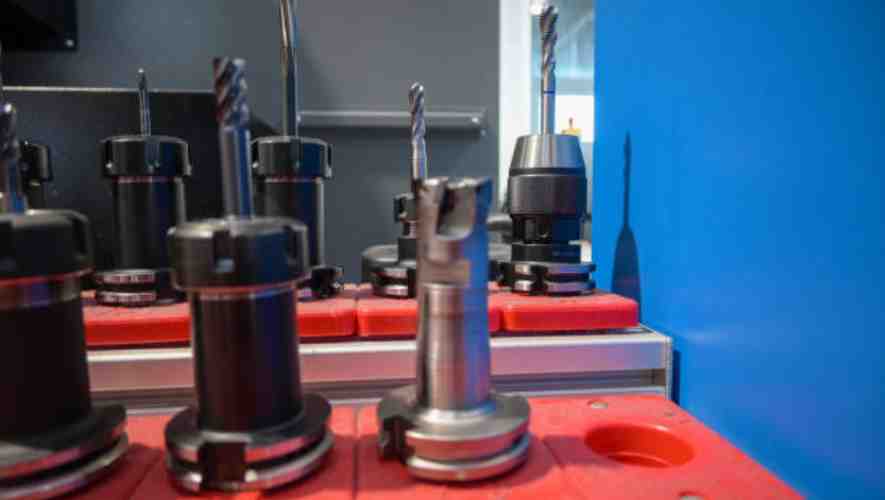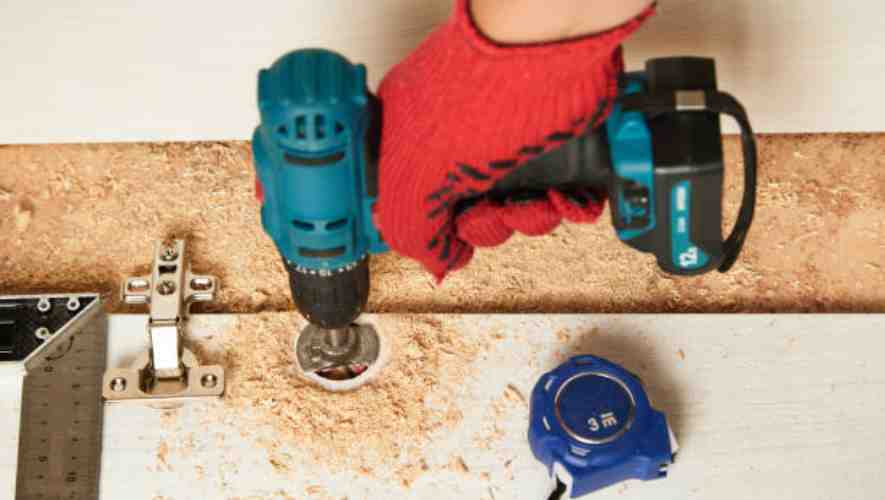Many DIY enthusiasts and woodworkers may find themselves wondering whether they can use a router bit in a regular drill. This query often arises when one is either lacking a proper routing tool or attempting to broaden the use of tools they already own. It’s a legitimate question considering the costs involved in purchasing specialized tools.
Can You Use A Router Bit In A Drill? Using router bits in a drill is not advisable. Drills lack the necessary speed and power control, leading to imprecise cuts and potential damage to both the bit and the material.
The information provided here will clarify why using router bits in a drill isn’t recommended, explore the differences between drills and routers, and suggest alternatives. By understanding the limitations and proper tools required, you can ensure better results in your woodworking projects and potentially save time and resources
Technical Comparison between Routers and Drills

Structural Differences: Chuck Design and Motor Speed
Routers and drills are fundamental tools in both woodworking and metalworking, yet they differ significantly in structure.
Routers use a collet chuck to hold bits, designed for accommodating various shank sizes, which facilitates a quick change of bits suitable for intricate cuts. In contrast, drills employ a keyless chuck, which can secure drill bits, drivers, or burrs, providing versatility in drilling and driving applications.
Moreover, routers operate at higher motor speeds (ranging from 10,000 to 30,000 RPM) compared to most drills, which allows them to create smooth and precise cuts on the workpiece.
Performance Characteristics: Torque and Rotational Speed
The performance of routers and drills is defined largely by torque and rotational speed, which cater to different tasks. Routers, with their high rotational speeds, are optimized for cutting through wood and other materials with minimal resistance, focusing on the precision and finish of the cut rather than sheer force.
Drills are built to deliver higher torque at lower speeds, making them ideal for drilling holes and driving screws where force and control are necessary, particularly in tougher materials like metals and dense woods.
Impact of These Differences on Tool Usage and Capabilities
The structural and performance differences between routers and drills significantly impact their respective usages and capabilities. Routers, with their sophisticated speed controls and specialized chucks, are best suited for detailed woodworking tasks such as trimming, shaping, and decorative edge work.
On the other hand, drills are more versatile, capable of performing a variety of tasks ranging from simple drilling to complex installations using various attachments. These differences make each tool uniquely valuable, with routers excelling in fine craftsmanship and drills in general construction and assembly tasks.
Risks and Limitations of Using Router Bits in Drills

Mechanical Risks: Damage to the Bit or Drill Due to Improper Fit
Using router bits in drills poses significant mechanical risks, primarily due to the mismatch in design and purpose. Router bits are specifically engineered for the high speeds and stability of a router, not for the torque-heavy operation of drills.
When used in a drill, the improper fit can lead to increased wear and tear on both the bit and the drill’s chuck, potentially causing the bit to break or the drill to malfunction. This misuse can shorten the lifespan of both tools, leading to unexpected maintenance or replacement costs.
Safety Risks: Increased Chance of Accidents Due to Lack of Stability and Control
The safety risks of using router bits in drills are considerable. Drills are not designed to handle the lateral pressure that routing exerts on the bit, which can lead to a lack of stability and control.
This improper use can result in the bit slipping or grabbing the material unpredictably, increasing the risk of accidents. Such scenarios may lead to injuries from flying debris or direct contact with the spinning bit, emphasizing the importance of using the correct tool for the job.
Quality of Work: Potential for Poor Outcomes and Workpiece Damage
Employing router bits in drills can severely impact the quality of work. Routers are designed to spin at much higher speeds than drills, allowing for cleaner and more precise cuts.
Using a drill, which operates at lower speeds and with less stability, can result in jagged cuts, tear-outs, and poor finishes that compromise the aesthetics and structural integrity of the workpiece.
This suboptimal performance not only affects the final product but can also lead to increased material waste and additional time spent on corrections.
Expert Opinions and Industry Standards

Summaries of Expert Advice on Tool Usage
Experts in the field of tool management emphasize the importance of proper tool selection, maintenance, and operation. They advocate for regular training sessions to update skills and knowledge, reflecting the latest technological advancements.
Proper usage of tools, as guided by seasoned professionals, maximizes efficiency and minimizes wear and tear, ensuring that each tool performs at its best. Additionally, expert advice often includes tips on ergonomic usage, which can prevent workplace injuries.
Review of Manufacturer Guidelines and Safety Standards
Manufacturer guidelines and safety standards are pivotal in safeguarding users and ensuring the durability of tools. These guidelines are meticulously crafted based on extensive research and user feedback, aiming to address potential risks associated with tool usage.
Safety standards, often endorsed by regulatory bodies, provide a framework that manufacturers must follow, which include detailed instructions on correct operation procedures and safety precautions. Regular updates to these guidelines help in adapting to new safety challenges and technologies.
Relevant Anecdotes or Case Studies Illustrating Common Practices
Anecdotes and case studies are invaluable for illustrating the practical application of tools in various scenarios. For instance, a case study might detail how a construction company successfully implemented a new safety protocol, significantly reducing workplace accidents.
Such stories not only highlight common practices but also demonstrate the impact of adhering to expert advice and industry standards. These real-world examples serve as a learning tool for both new and experienced users, promoting a culture of safety and efficiency.
Alternative Tools and Techniques

Recommended Tools for Tasks Commonly Done with Router Bits
For tasks accomplished using router bits, such as edging, grooving, and detailed pattern work, several tools can be equally effective. Spindle molders are excellent for heavy-duty edging and profiling in industrial settings. For intricate and artistic detailing, a Dremel tool provides precision and maneuverability. Laminate trimmers are also a practical choice for smaller projects that require fine, clean edges.
Comparison of These Tools with Drills Using Router Bits
While drills equipped with router bits can perform basic routing tasks, they generally lack the specialized capabilities of dedicated routers.
Drills typically operate at lower speeds compared to routers, resulting in less precision and finish quality. Moreover, routers are designed to handle lateral movement across the material surface, which drills are not ideally suited for, leading to potential inaccuracies and tool wear.
Advantages of Using the Right Tool for the Right Job
Utilizing the appropriate tool for specific tasks not only enhances efficiency but also improves the quality of the final product. Tools designed for specific operations ensure better control, accuracy, and outcomes.
For example, using a spindle molder for edging instead of a general-purpose drill ensures a smoother, more consistent finish. Correct tool usage reduces the risk of damage to both the tool and the material, extending the lifespan of both and ensuring safer working conditions.
Conclusion
To summarize, while it is physically possible to insert a router bit into a drill, the outcome is generally unsatisfactory and can be unsafe. Drills are not designed to handle the high speeds and specific movements that router bits require.
If you are tempted to use your drill as a router due to budget constraints or curiosity, it might be better to consider investing in the right tool for the job or renting a router. Using the correct equipment not only guarantees the quality of your work but also ensures safety. As always, prioritize getting the right tool for the job – your projects and safety are worth it.

